E-mountainbikes are damn expensive, and we aren’t all able to just fork out € 10,000. But do you really need the top end model with all the bells and whistles? What are eMTBs for under € 7,000 capable of, where do you get the most for your money, and what should you look for when buying? We tested 7 eMTBs ranging between € 6,000 to € 6,999 to find out.
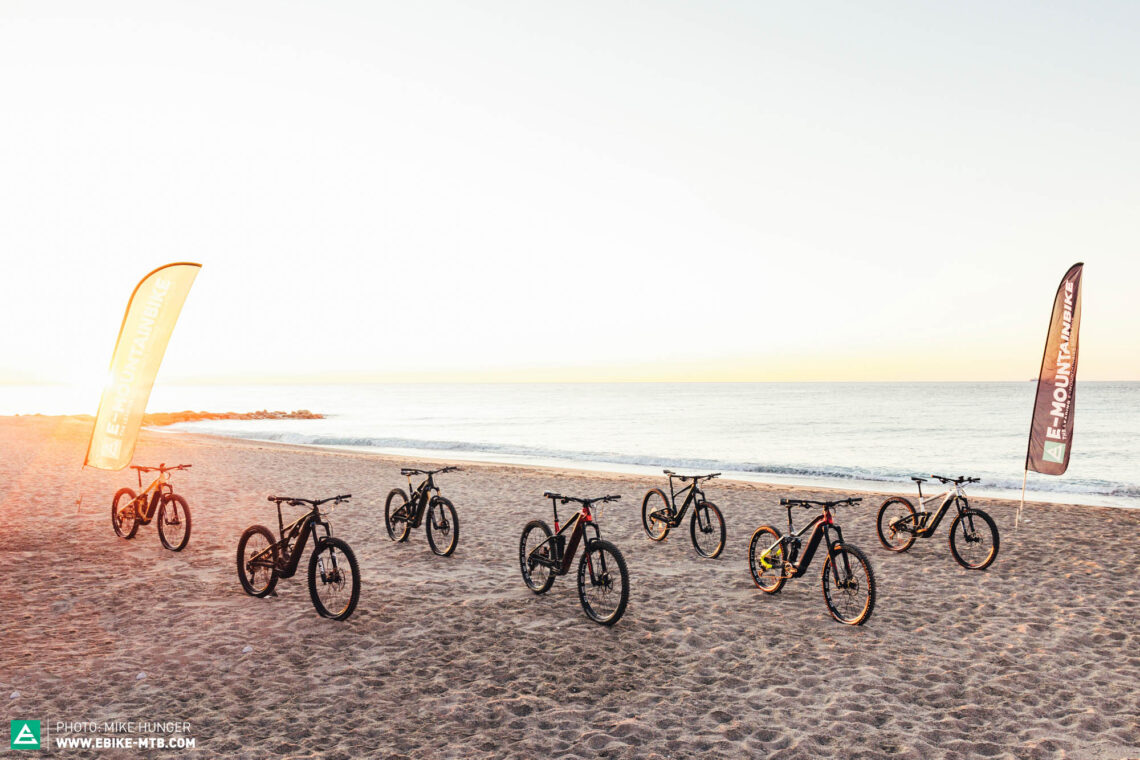
Table of content
- What must the best eMTB for up to € 7,000 be capable of?
- Which type of ebiker are you?
- The test field: 7 eMTBs for under € 7,000
- The motor systems at a glance
- Where did we test and who tested them?
- The group test in numbers
- Where must you compromise?
- Tops and flops
- The best eMTB for under € 7,000
- Our Best Buy
- An overview of the eMTBs on test for under € 7,000
Money doesn’t grow on trees, which is why we all make our daily pilgrimages to work and back, to fulfil our dreams of the latest bikes and the coolest equipment. The fact that fulfilling our eMTB dreams isn’t a cheap endeavour has been proven once again by our big eMTB group test of 30 bikes. The average price was a whopping € 11,151 – a new record, oof! Since we didn’t all strike it big in the Bitcoin rush and now have cash coming out of our ears, we conducted a group test of 7 more affordable eMTBs with a price limit of up to € 7,000. To us, this seems like a reasonable upper limit that includes some very exciting, capable bikes. We even had bikes from premium brands such as Specialized and SCOTT, which you wouldn’t necessarily expect in a budget-focused group test.
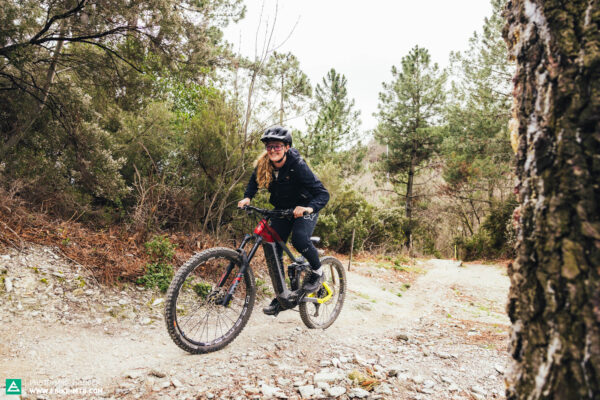

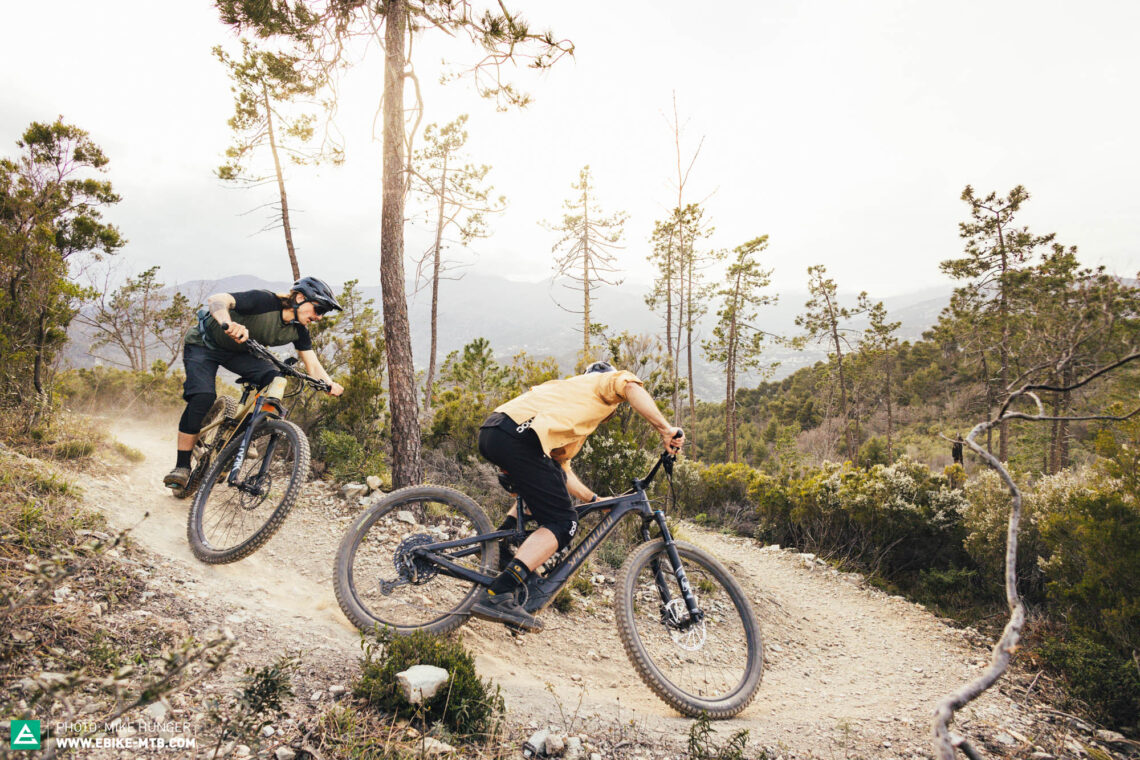
We also know that this is still a big sum of money. So, it’s all the more important that you spend on the right bike, because an eMTB isn’t like a pizza after a long day on the bike, which you can just order because you feel like it. Rather, it takes a lot of consideration and thought to find the right bike that will make you happy in the long term in a wide range of use cases. In our group test, we won’t just tell you which is the best bike for under € 7,000, but also what to look for when buying, what makes a good eMTB and, finally, which bike is most likely to suit you. Is it black magic? No, it’s simple logic!
What must the best eMTB for up to € 7,000 be capable of?
How can we assume to know what you want from your ideal bike? The answer lies in our annual reader survey, among other things. After all, we don’t test the bikes for ourselves, but for you. Our last survey had over 12,000 participants and consisted of up to 90 questions. Of course, we don’t let this enormous wealth of knowledge go to waste, but use it to find out what is important to you. We adjust the criteria by which we evaluate the bikes according to the results of the survey, and the test fleet selection is also based on your interests.

Since we also know that you use your eMTBs for a wide range of activities, we aren’t looking for the best bike for a specific discipline that serves one niche, but for the best all-rounder! In testing, our final verdict doesn’t come down to individual aspects of the bike, but instead considers the overall concept, because the best bike doesn’t necessarily have the most powerful motor or the best spec. Above all, what we look for is good geometry, well-performing rear-end kinematics, convenient accessories, and a digital ecosystem that is fun rather than frustrating. Like an orchestra, a bike can only achieve the perfect performance if everything plays together in harmony, and the violin isn’t too loud or the flute too shrill. However, the most harmonious overall concept won’t be revealed on paper, but only during real world tests, though many keyboard warriors will disagree with this. Even if a geometry table is so beautiful and perfect that it brings tears of joy to your eyes, you’ll have a rude awakening on the trail if this is paired with poor kinematics. The same goes for the power output of the motor: the most powerful motor on test can make life quite difficult if it can’t transfer that power to the trail due to poorly performing rear suspension and tires that don’t offer enough grip, or if it kicks in so aggressively that you can hardly hold on to the bars. To save you the trouble of clicking through spec sheets, geometry tables, and ebike forums on the internet, and then making half-baked assumptions about which bike provides a good overall concept and which does not, we’ve taken care of the practical part for you and headed to sunny Liguria with 7 bikes for under € 7,000 in tow.

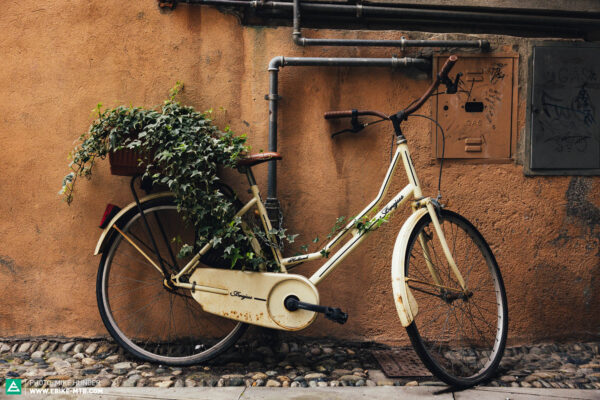
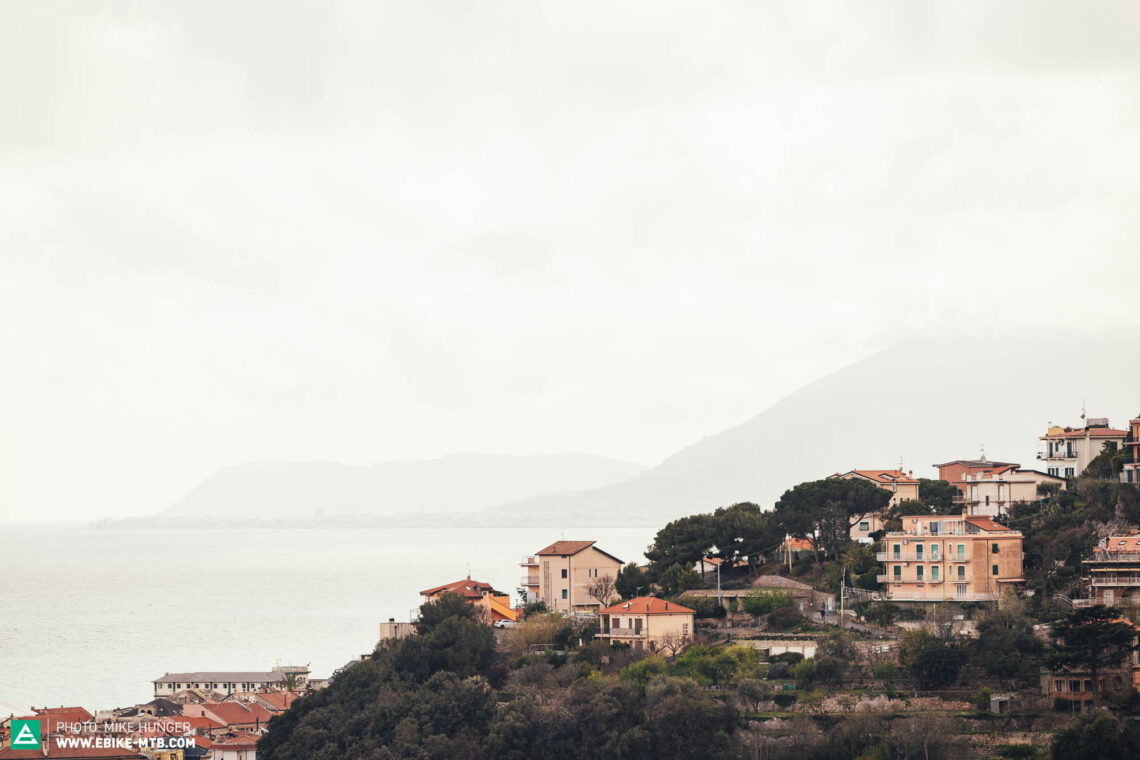
In general, eMTB developers don’t have an easy job and we don’t envy them. Why do we say that? Because they must reconcile different and occasionally contradictory characteristics and requirements in one bike. What counts most of all is the trail performance both up- and downhill – we’re still reviewing mountain bikes, after all. The motor should offer enough assistance to make easy work of even the steepest climbs, and the bike should be able to transfer its power to the trail. Of course, it must be easy to modulate and control, too. We don’t demand less on the descents either – here we want a good balance of composure and agility, as well as confidence inspiring handling on drops and chutes, all while keeping enough weight on the front wheel for cornering. And while we’re at it, we would also like intuitive and balanced handling that accommodates both beginners and advanced riders. So, are you still interested in developing eMTBs? In addition to performing on the trail, a good eMTB must also serve as a touring bike. For this, you want a comfortable riding position, a supple rear end, and the appropriate battery capacity for the intended use. For it to be a good companion day to day or on your commutes, cleverly integrated lights or integrated theft protection certainly are nice to have. Smart connectivity solutions are needed to control and fine tune the motor or the entire bike, bundling many functions in a clear and intuitive way – easier said than done.
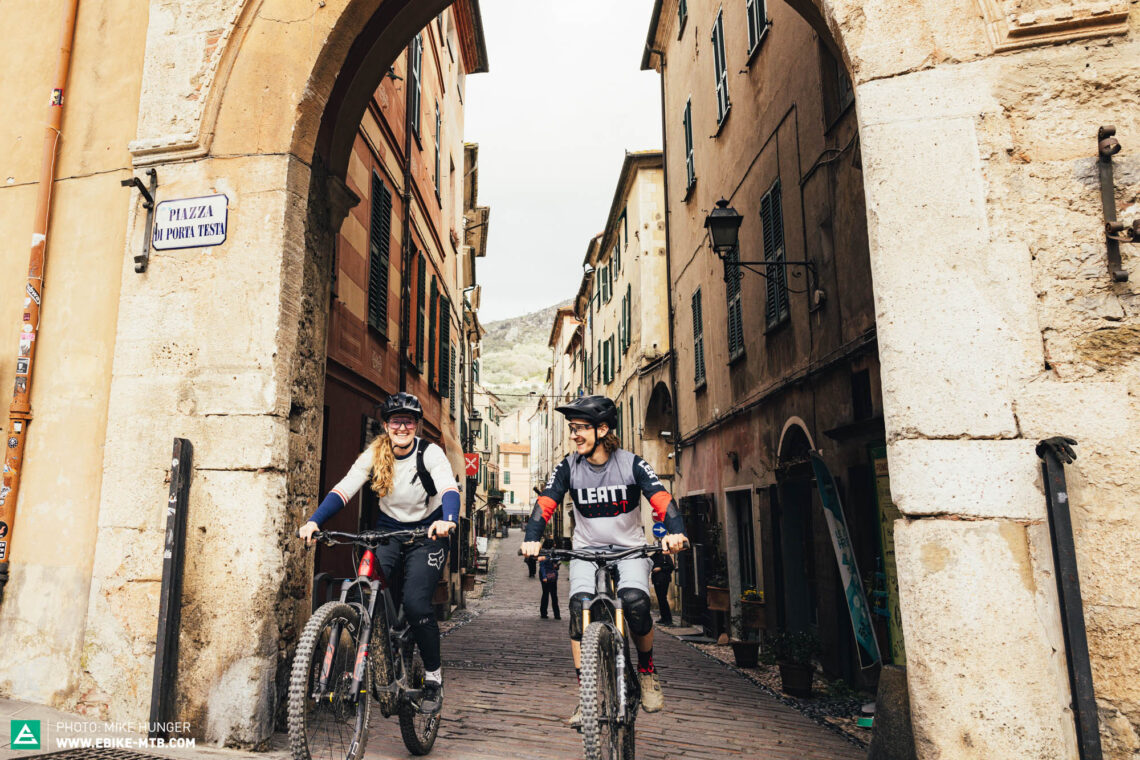
There are brands who take this enormous balancing act head on and try to design the perfect bike for everyone, a bike that ticks all the boxes just mentioned. Yet, there are also brands who focus on just one aspect of an eMTB to the detriment of others. This reflects the market, since we aren’t all looking for the perfect all-rounder. There are plenty of ebikers who want a bike that excels in a specific scenario, such as climbing like a mountain goat, or descending like a hooligan. To give you an overview of the respective strengths and weaknesses of each bike, we put them through a wide range of tests, giving you a nuanced verdict and thus making your choice a whole lot easier – regardless of whether you’re looking for an all-rounder or a specialist.
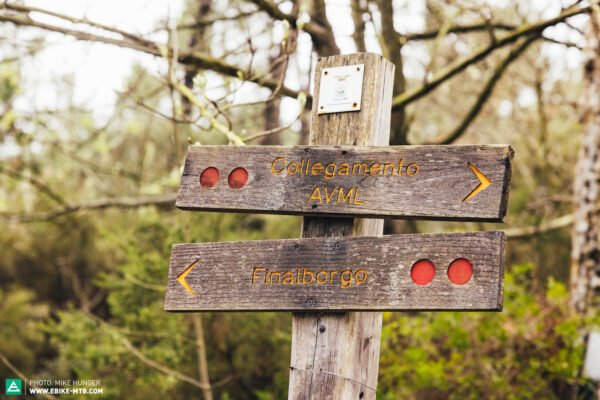
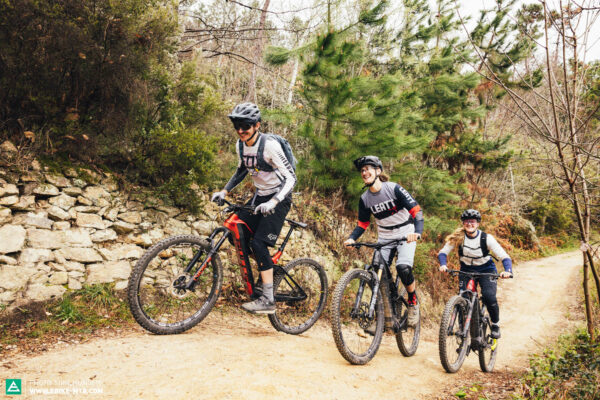
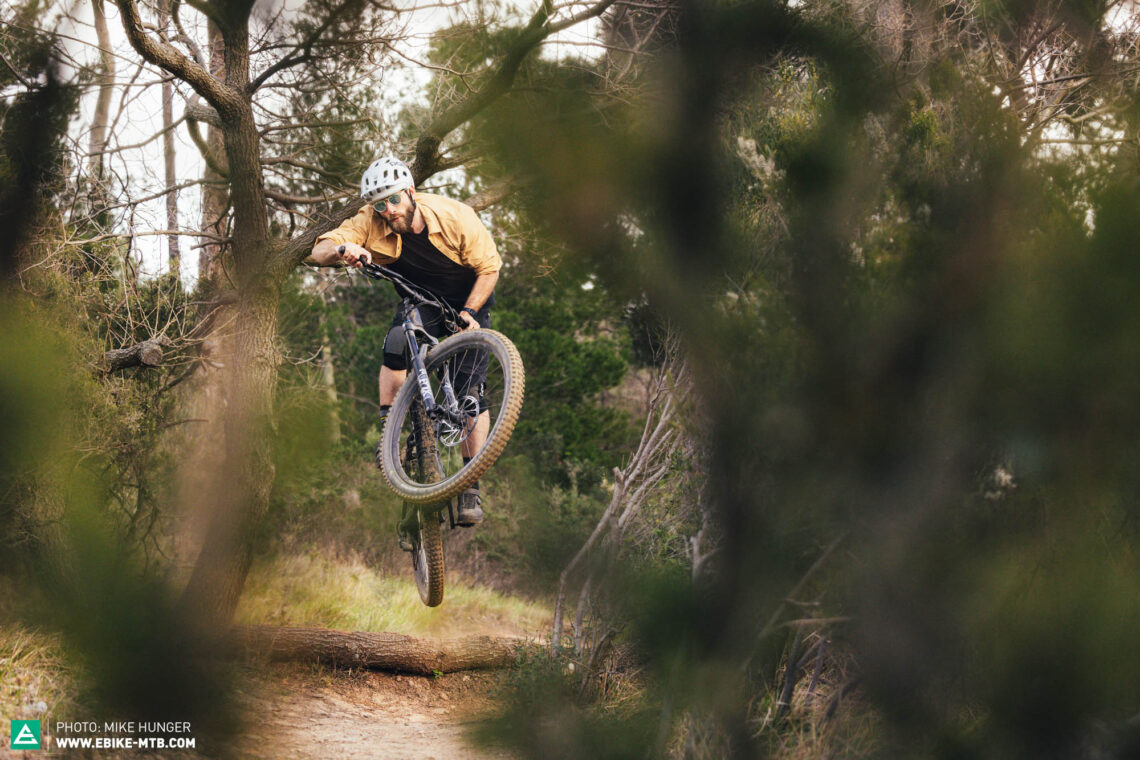
Which type of ebiker are you?
Assessing yourself or putting yourself into a specific category is never easy, but we’re here to help. After answering a few simple questions, our interactive buyers guide will recommend eMTBs that best suit you and your riding style. Based on your input, it will also suggest further reading material, giving you the know-how you need to get started or just deepen your knowledge. What are you waiting for?
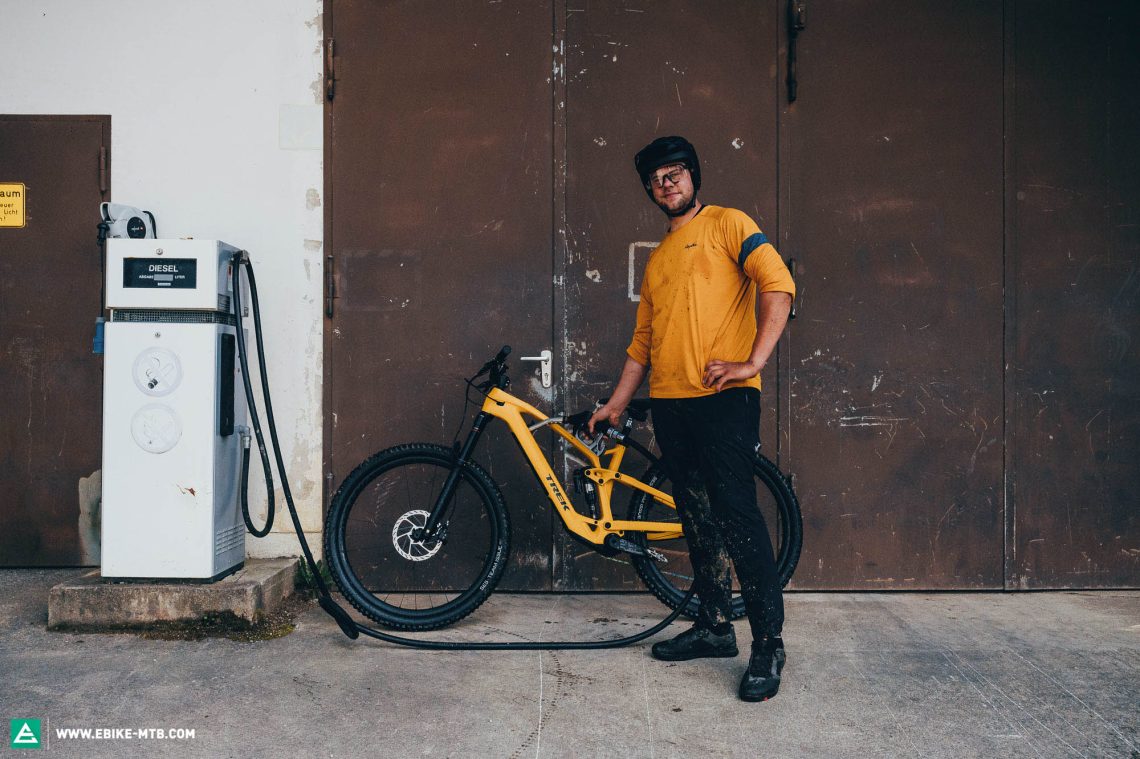
The test field: 7 eMTBs for under € 7,000
| Bike | Price | Travel f/r | Wheel size f/r | Weight |
|---|---|---|---|---|
| Bulls SONIC EVO EN-SL1 Carbon | € 6,699 | 160/160 mm | 29” | 22.1 kg |
| Haibike Nduro7 | € 6,499 | 180/180 mm | 29”/27.5” | 26.5 kg |
| Moustache Samedi 29 Trail 5 | € 6,299 | 150/150 mm | 29” | 25.1 kg |
| RADON Deft 10.0 750 | € 6,799 | 170/170 mm | 29” | 24.7 kg |
| SCOTT Lumen eRide 910 | € 6,999 | 130/130 mm | 29” | 17.8 kg |
| SIMPLON Steamer Pmax | € 6,929 | 170/166 mm | 29”/27.5” | 27.0 kg |
| Specialized Turbo Levo Comp Alloy | € 6,000 | 160/150 mm | 29”/27.5” | 23.7 kg |
Anyone who thinks that you can’t get a decent eMTB for under € 7,000 is wrong! The concepts and ideas of the 7 bikes on test are almost as wide ranging as in our big, uncapped group test. This much is evident when looking at the figures of the different bikes. The weight difference between the lightest bike (17.8 kg) and the heaviest bike (27 kg) is almost 10 kg. The same is true of the motor systems, with the maximum torque output running the gamut from 50 Nm to 90 Nm, and the batteries ranging in capacity from 360 Wh to 750 Wh. All this goes to show how differently the individual brands have started to interpret eMTBs. Moreover, the burgeoning trend of Light-eMTBs is steering the e-mountainbike industry in an entirely new direction once more. Our big eMTB group test of 30 bikes included 9 Light-eMTBs, which is why we’re all the happier to have a bike of this category in our sub € 7,000 group test.
While it’s tempting to draw conclusions about a bike based on its spec sheet, you shouldn’t allow yourself to be dazzled by facts and figures. Just because a bike is heavy doesn’t necessarily mean it’s sluggish, for example. At the same time, a light bike isn’t always agile. Repeat after us: what are the magic words? Overall concept! The same goes for battery capacity and range. Our tests have proven that the biggest battery doesn’t necessarily mean the longest range. It’s all about the interaction of the motor with the bike as a whole. An efficient motor on an efficient bike can take you further with a smaller battery than a big-hitting powerhouse with a giant battery.
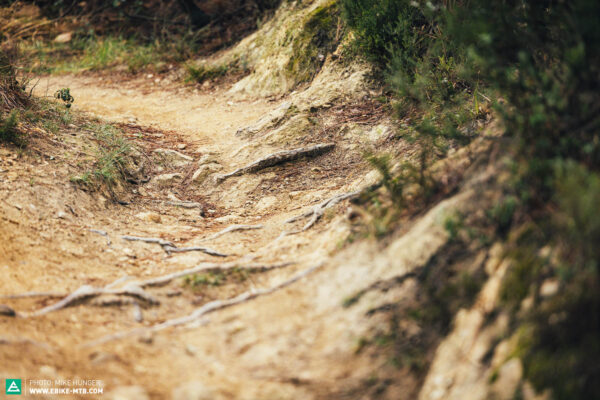
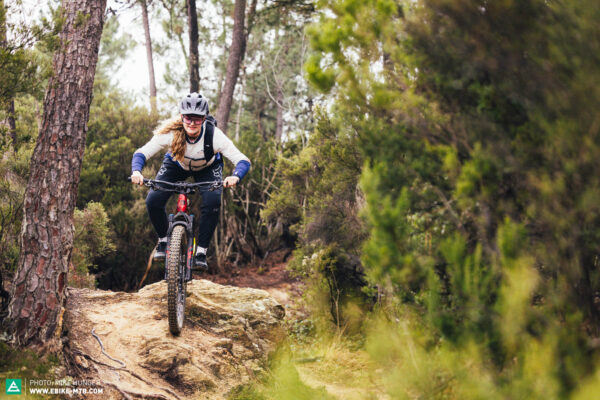
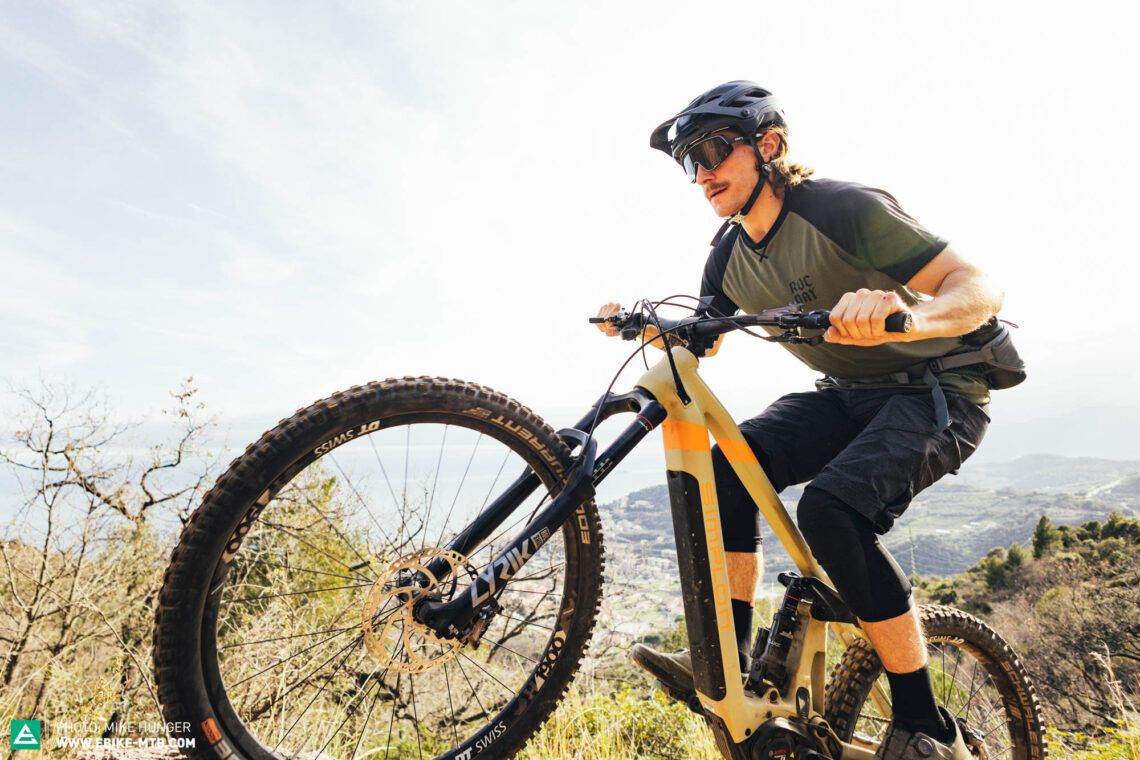
In addition to the bare facts in the table above, we want to give you a brief introduction to each of the bikes on test, starting with the flyweight in the test field, the SCOTT Lumen eRide 910. When you first see it, you might think that an analogue bike has somehow found its way into our eMTB group test, but the only Light-eMTB on test simply does a good job of hiding its compact TQ HPR 50 motor behind its elegant carbon lines. With a weight of 17.8 kg, it is by far the lightest bike in the test field. The BULLS SONIC EVO EN-SL1 is somewhat heavier. At 22.1 kg, however, it’s the lightest full-power eMTB in the test field with its slender carbon frame, combining the new Shimano EP801 motor with an electronic and even automatic Shimano XT Di2 drivetrain. The Specialized Levo Comp Alloy also boasts a lot of the latest technology. Like the top end models, it has the Mastermind display – the heart of the bike – integrated into the top tube for 2023. In the past, the Levo has performed convincingly regardless of the spec, because Specialized have always been among the eMTB pioneers, often setting the standard in integration. From the motor to the ecosystem surrounding it, everything is developed in-house, which should result in a very coherent overall package, but does this also apply to the entry level variant?
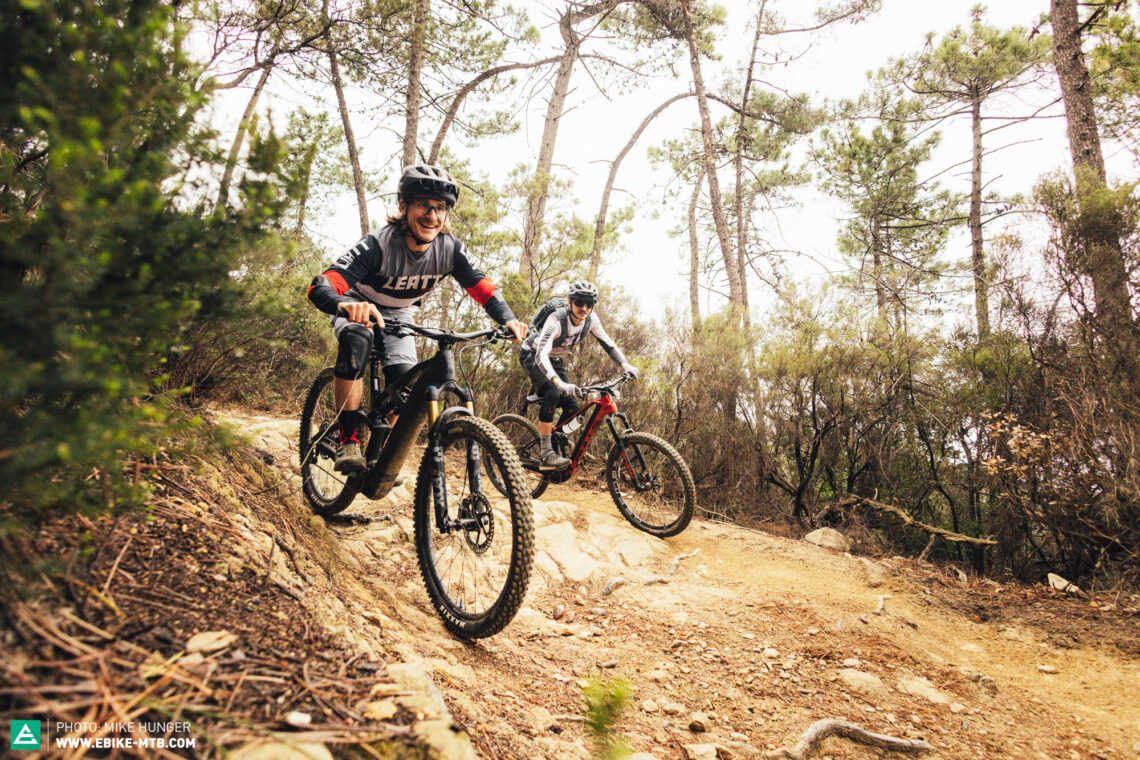
With a burly appearance and bright colours, the Haibike NDURO 7 enters the ring with its chest puffed out. Offering 180 mm travel, it could hardly look more aggressive. It is the only bike on test featuring the 85 Nm Yamaha PW-X3 motor. We found out whether it rides as much like a monster truck as it looks. The test field includes three bikes featuring the Bosch Performance Line CX motor. The Moustache Samedi Trail 5 is the only bike in the test field that relies on a shock that was specially developed in-house. The Moustache Ride Control shock is said to feel like a magic carpet on the trail. To find out whether the feeling really is magical or just a cheap party trick, you’ll have to read the individual review. The SIMPLON Steamer Pmax is as elegant as a steamroller. The sturdy aluminium frame with its large weld seams and metal sheets can be combined with the components of your choice in their online configurator. However, it has to make do without Bosch’s new Smart System, because SIMPLON still rely on the old Bosch Performance Line CX motors. The RADON DEFT 10.0 750 is the reigning Best Buy champion from our big eMTB group test. With its excellent spec, it’s a surprisingly affordable dream come true for lovers of high-end components. Is that enough to prevail over the more budget-friendly competition on test?
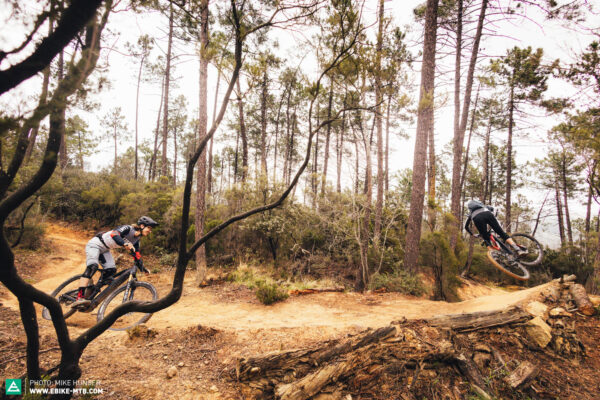

If your dream bike wasn’t in the list, we have to disappoint you. Unfortunately, we couldn’t get all the bikes we’d like to test. Certain parts of the industry are still plagued by delivery bottlenecks, which makes it difficult for brands to provide us with test bikes or to deliver them on time. Besides that, some brands are concerned about providing us with anything less than their top models, and prefer to leave it to the big group test without a price cap. We would have liked to include last year’s winner, the MERIDA eONE-SIXTY 950, but a big price increase means it no longer fits the budget given for this. Sadly, the Orbea Rise H15, which performed so convincingly last year that we declared it the Best Buy, didn’t make it due to bottlenecks. We would have loved to see how it fares against the even lighter SCOTT Lumen eRide 910.
The motor systems in our eMTB group test under € 7000 at a glance
| Bike | Motor | Torque (Nm) | Battery (Wh) |
|---|---|---|---|
| Bulls SONIC EVO EN-SL1 Carbon | Shimano EP801 | 85 | 750 |
| Haibike Nduro7 | Yamaha PW-X3 | 85 | 720 |
| Moustache Samedi 29 Trail 5 | Bosch Performance Line CX Smart System | 85 | 750 |
| RADON Deft 10.0 750 | Bosch Performance Line CX Smart System | 85 | 750 |
| SCOTT Lumen eRide 910 | TQ HPR 50 | 50 | 360 |
| SIMPLON Steamer Pmax | Bosch Performance Line CX | 85 | 625 |
| Specialized Turbo Levo Comp Alloy | Specialized 2.2 Custom Rx Trail tuned | 90 | 700 |
Our group test of 7 bikes represents a large variety of different motor options, including 5 different systems. Bosch are the top dogs with 3 bikes on test relying on their motors. The new Bosch Performance Line CX Smart System motor can be found on the RADON DEFT 10.0 750 and the Moustache Samedi Trail 5. The SIMPLON Steamer Pmax comes specced with the outdated, non-Smart System predecessor. Sharing the same hardware, both motors can generate 85 Nm of torque, providing a generous amount of assistance. On the RADON and Moustache, the motor is combined with a 750 Wh battery, whereas SIMPLON opted for the smaller 625 Wh battery on the Steamer Pmax.

The Shimano EP8 motor featured on more than half of the bikes in last year’s budget eMTB group test. This year, the BULLS SONIC Evo EN-SL1 is the sole Shimano representative, though in the form of the latest Shimano EP801 motor. While it also delivers 85 Nm of torque, it feels significantly weaker on the bike compared to the Bosch. The new EP801 offers some new and even smarter features than the previous EP8 model. It gives you even more profiles to configure according to your own preferences and can be combined with an automatic Shimano XT Di2 drivetrain, which BULLS have taken advantage of for this test. Things get a bit more exotic with the Yamaha PW-X3 motor. This rarely spotted motor excels with a lot of power and a user friendly remote. Despite putting out 85 Nm of torque, it feels more powerful than the Bosch system. The remote is easy to use, but the unrefined and clunky LED display can’t keep up with the competition.
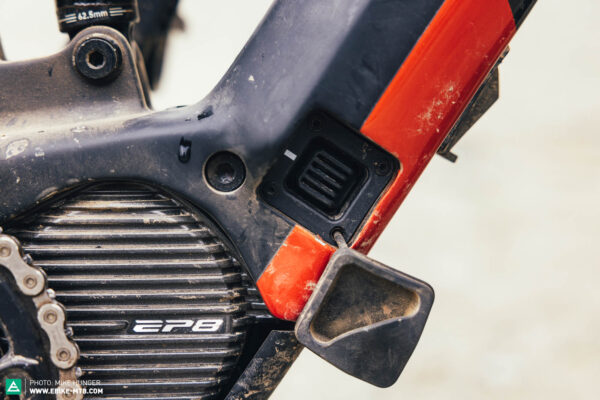
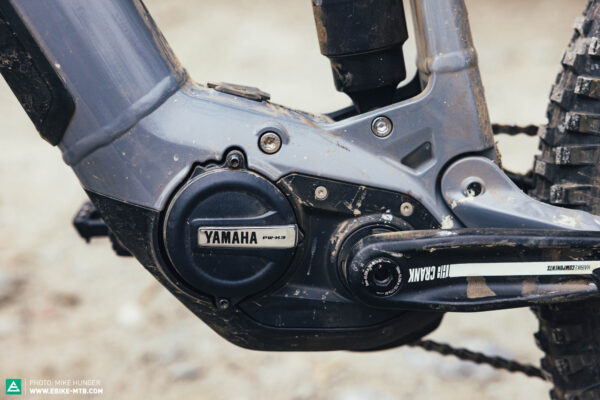
What would a Specialized eMTB be without a Specialized motor? Of course, the Specialized Levo Comp Alloy comes with the Specialized 2.2 Custom RX Trail Tuned motor. With a stated torque output of 90 Nm, it doesn’t just trump the competition on the spec sheet, but also feels powerful on the trail. It forms part of an entire in-house ecosystem, including the Mastermind display integrated into the top tube, which interfaces seamlessly with the Specialized Mission Control app. The motor is powered by a 700 Wh battery. As the only Light-eMTB on test, the SCOTT Lumen eRide 910 relies on the compact TQ HPR 50 motor. The system of the Munich-based tech company provides a maximum torque output of 50 Nm and is paired with a non-removable 360 Wh battery. Thanks to its compact design, it can be integrated very neatly and unobtrusively into the frame, paired with an integrated display in the top tube and a discreet remote. On the trail, it provides very natural feeling support while still allowing you to work up a sweat. It isn’t made for those who don’t like exerting themselves too much…

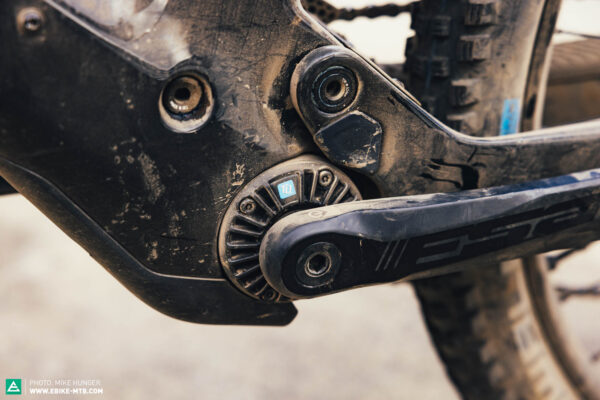
Where did we test the eMTBs, and who tested them?
Finale Ligure. A place name that resonates with so much more than just sunshine and coastlines. Hardly any other place is as central to the recent developments of eMTBing as sport, as the Ligurian coast welcomed e-mountainbikers with open arms very early on, hosting several EWS-E races. It is not for nothing that Finale Ligure has become a hot spot for Central Europeans fleeing from the muddy winter. Situated in the Italian province of Savona, it also allowed us to escape the rainy German spring, offering prime test conditions for our 7 budget-friendly e-mountainbikes. The temperature of the local climate ranges between 15 to 20° C in the spring, there’s hardly any rain, and you can already see the vibrant colours of flowering shrubs starting to dot the southern side of the main Alpine ridge. While the Mediterranean could have been a little warmer for a pleasant bathing temperature, we don’t want to sound ungrateful. After all, we had a steady supply of cappuccino and pizza so early in the season.
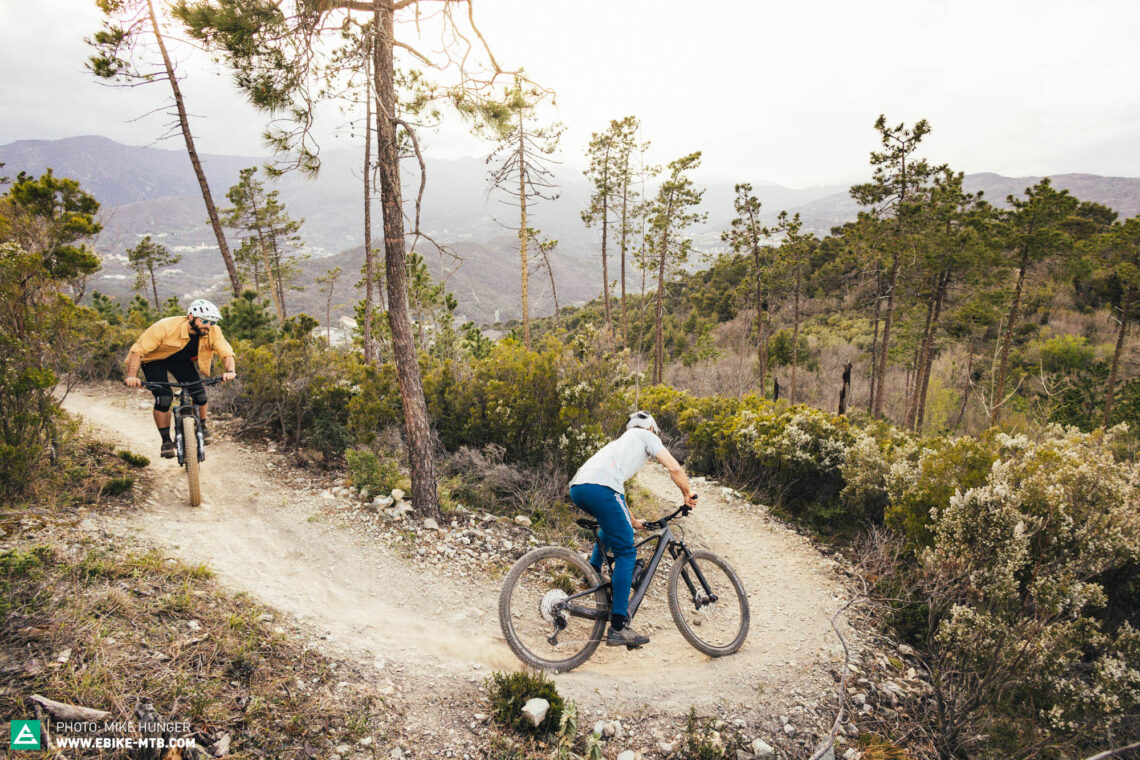

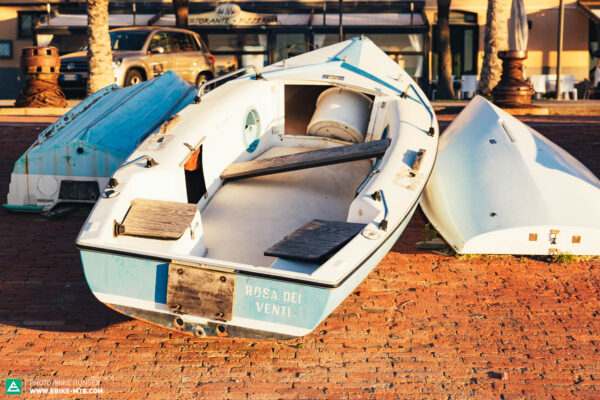

The name of our test track is no less legendary than Finale Ligure itself: Base Nato. An absolute classic among trails at the NATO base, it starts with a unique view of the landscape, stretching all the way to the sea, and it’s got everything a biker’s heart could desire: fast, flowing corners, roots, sharp rocks, slabs, jumps, and punchy climbs in between. If we were looking for the best overall concept for a trail, this would be it. Of course, the bikes also had to prove themselves on the climbs. The way back up to the NATO base consisted of a mixture of asphalt roads, rough gravel, woodland paths, and some technical uphill challenges. Day to day Ligurian life also had some challenges in store for the bikes, with the narrow streets of Finalborgo putting their commuting chops to the test during countless espresso and focaccia breaks.
Our eMTB test team

I have a very playful riding style and only stay on the ground when absolutely necessary. That’s why I want an agile bike with a lot of support and minimal weight. I’m especially enamoured with Light-eMTBs because of their natural handling, and the SCOTT Lumen eRide 910 even lets me turn my simple home trails into a fun challenge.

To me, espresso and ice-cream breaks are a waste of time, because I want to squeeze as many laps into one day as possible. A large battery that I can easily swap out during the day, together with lots of reserve and big-hitting downhill capabilities are key ingredients in my ideal formula for maximum downhill fun. Since I already have enough screen time in the office, I want a bike that works without first having to make adjustments in 10 different apps.
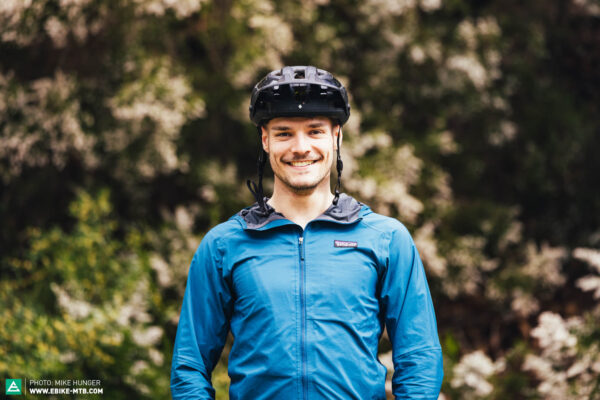
Since I already spend more than enough time in the workshop with my Defender, I don’t want to have to work on my bikes. As such, I want a mature and refined motor system that doesn’t give me headaches. Being able to rely on a reputable dealer network to solve any issues that might arise during a bike trip gives me added peace of mind.

For me, eMTBs are the perfect all-rounders. Ideally, they don’t just allow me to ride more trails than with my analogue bike, but also to descend almost as fast. I can commute to work without breaking a sweat, too, and hit a few trails along the way. There’s no better way to start the day!
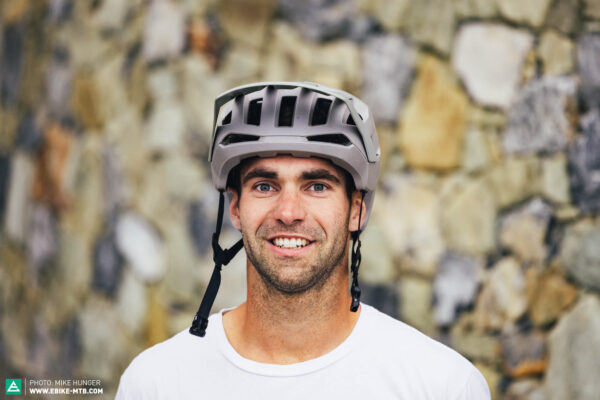
I work year-round as a bike guide in Finale Ligure, so I need an eMTB I can rely on. There’s nothing worse than getting stranded in the hinterland with guests because of a broken bike. Besides that, I want sufficient braking power and a good damper in the fork, so that my forearms remain fresh enough for post-work laps with my friends even after a week of guiding.

I’m new to the E-MOUNTAINBIKE team, but I’m certainly not new to eMTBs. For the occasionally very demanding trails of Finale Ligure, I want a bike that instils me with confidence and doesn’t throw me off without warning. As an experienced ebiker, I want a refined and intuitive electronic ecosystem that allows me to adapt the drive unit to my personal requirements without needing a degree in computer science.
The eMTB group test under € 7000 in numbers
For all the spreadsheet warriors, maths fetishists, and those amongst us who just love stats, you will find a list of the most important, fun, and trivial figures from the group test below.
Total damage
- 3 flat tires
- 1 broken spoke
- 3 wheels needed truing
- 1 exploded headset (just a regular day in the office for Mike)
- 1 lost display
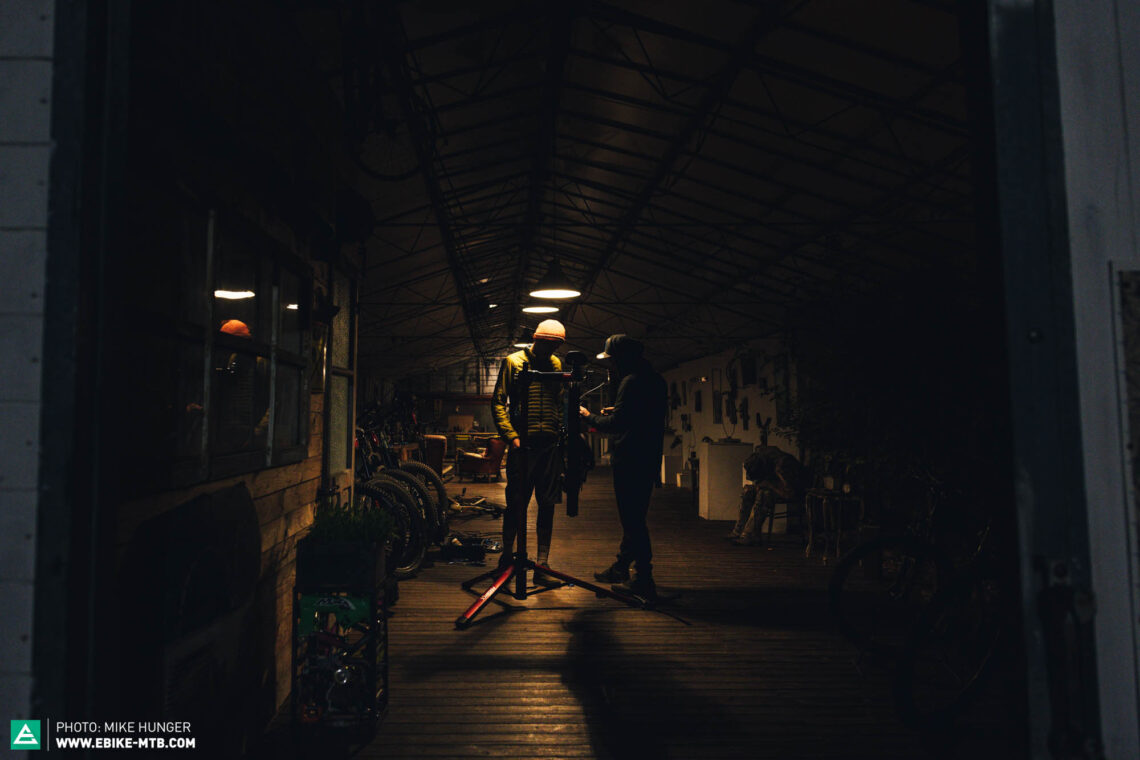
The bikes on test
7 bikes
- Average price € 6,603
- The most expensive bike on test is the SCOTT Lumen eRide 910 for € 6,999
- The most affordable bike is the Specialized Levo Comp Alloy for € 6,000 on the dot
- Price difference of € 999 between the ends of the spectrum
- 4 of the bikes roll on 29″ wheels
- 3 of the bikes roll on 29″/27.5″ wheels
- The bikes weigh an average of 23.84 kg
- The lightest bike weighs 17.8 kg
- The heaviest bike weighs 27 kg
- The weight difference between the lightest and the heaviest bike is 9.2 kg
- The smallest battery has a capacity of 360 Wh
- The biggest battery has a capacity of 750 Wh
- The weakest motor puts out 50 Nm
- The most powerful motor puts out 90 Nm



Life in Finale Ligure
- The espresso at the Piazza in Finalborgo costs € 1.20 and € 1.40 on the drive at Autogrill
- Our favourite Focacceria offers 14 different varieties of Focaccia
- The region has 189 official bike trails
- There’s a 1,018-metre elevation difference between the beach and the legendary NATO base
- The Ligurian Pesto alla Genovese is made up of 5 ingredients
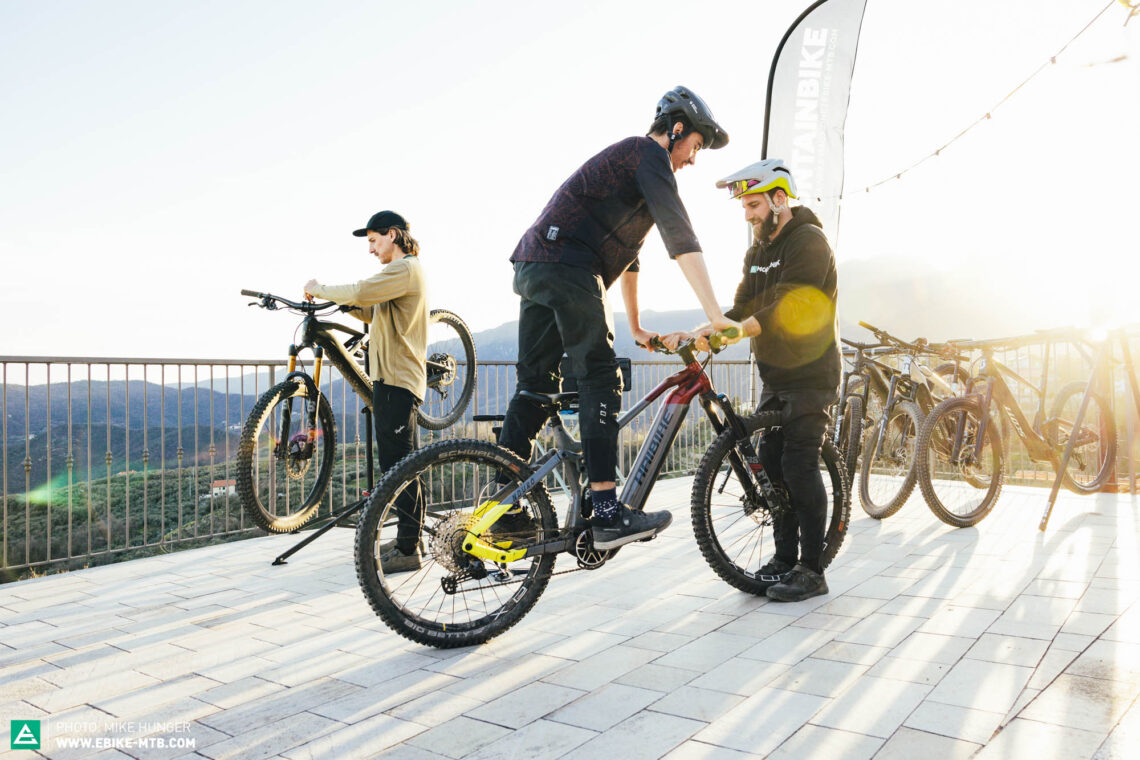
Cheaper is worse?! Where must you compromise when buying an eMTB for under € 7,000?
Those who brake – with undersized rotors – lose!
The brakes are undoubtedly the most important part of an eMTB in terms of safety. Fortunately, all the bikes on test come specced four-piston brakes that match their intended use. In addition to the brakes themselves, however, the size of the rotors is a decisive factor in braking power and reliability. The SCOTT Lumen eRide 910 is the only bike to rely on small 180 mm rotors front and rear. This is due to the lightweight concept placing too much importance on saving weight, though upgrading to 200 mm rotors adds an acceptable amount of additional weight while providing noticeably more braking power. The Specialized Levo Comp Alloy and RADON DEFT 10.0 750 set the standard in terms of rotor size, fitted with 220 mm rotors up front and combined with 200 mm versions at the rear. Our test field included brakes from three brands: four bikes rely on stoppers from Shimano, two on MAGURA, and just one bike on SRAM. Most of them are the lower end models of the respective brands. However, this hardly has any effect on stopping power since the more expensive models usually differ only in terms of adjustability. Since you won’t adjust the lever reach of the brakes all that often, having to do so with an Allen key isn’t all that much of a drawback. However, it is important that the lever reach can be adjusted at all, which is the case with all bikes on test.
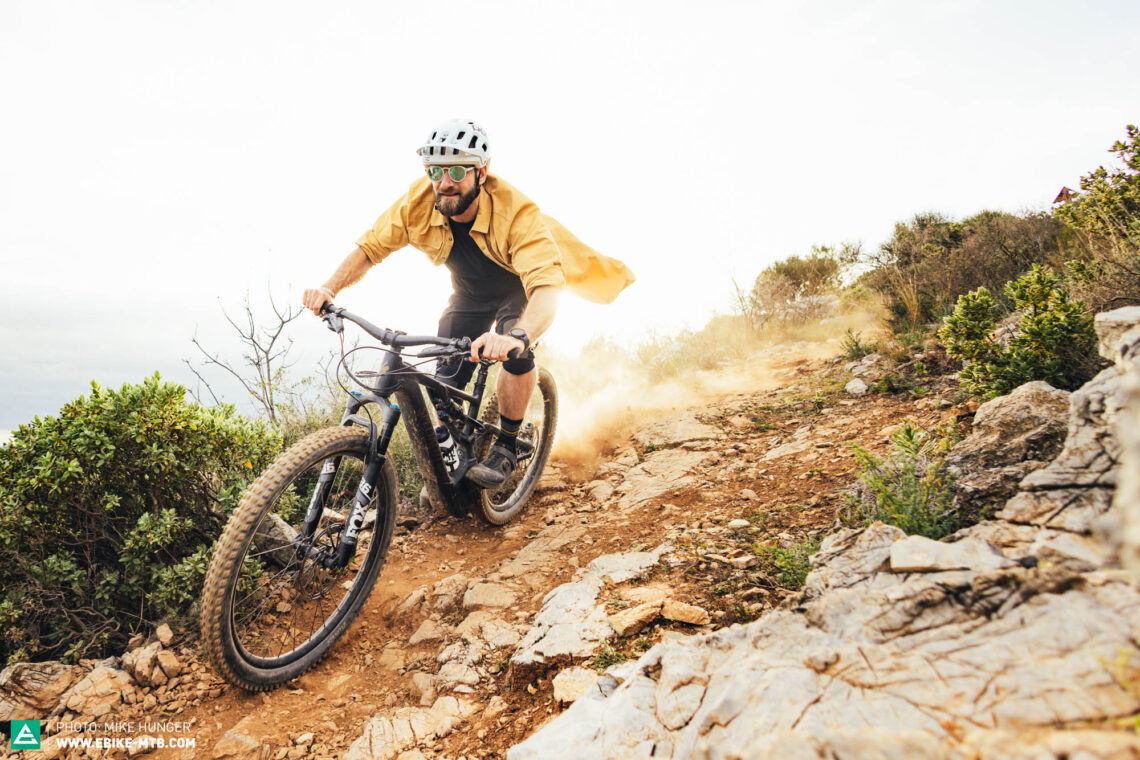

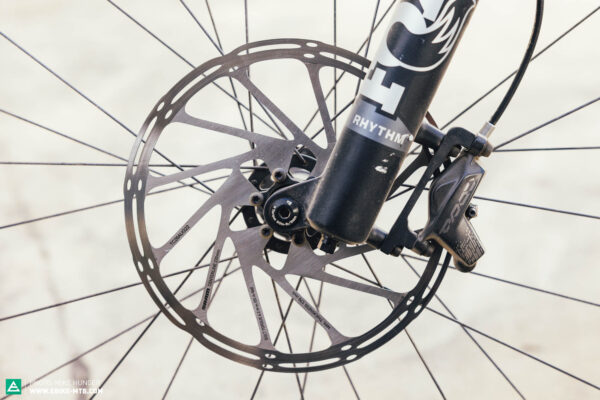
Is better always better? Which suspension do you need on your eMTB?
Hardly any other part contributes as much to the performance of an eMTB as the suspension, consisting of the fork and shock, because it largely determines whether a bike performs well or poorly on the trail. The suspension is crucial for touring comfort, as well as performance on technical climbs too, since it has a big influence on uphill traction and efficiency. The test field boasts a wide range of different suspension models and dampers. The majority of these are supplied by RockShox and FOX. What riders need from their suspension ultimately depends heavily on the intended use. In general, however, it can be said that performance-oriented riders with a focus on trail riding benefit more from different adjustment options and higher-quality dampers than beginners, touring riders, and those who only ride trails occasionally. The latter benefit more from simpler suspension components that are easy to set up. This also reduces the risk of making the wrong adjustments or worsening things.
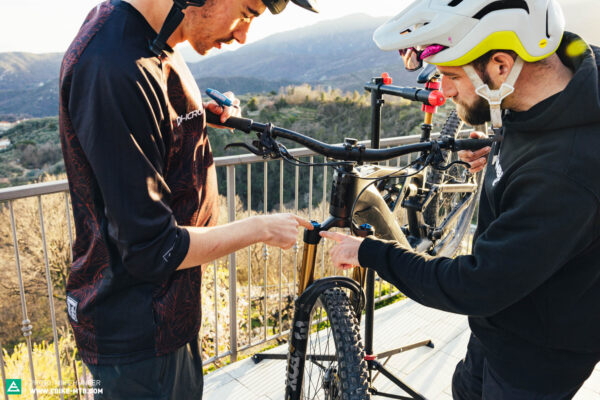
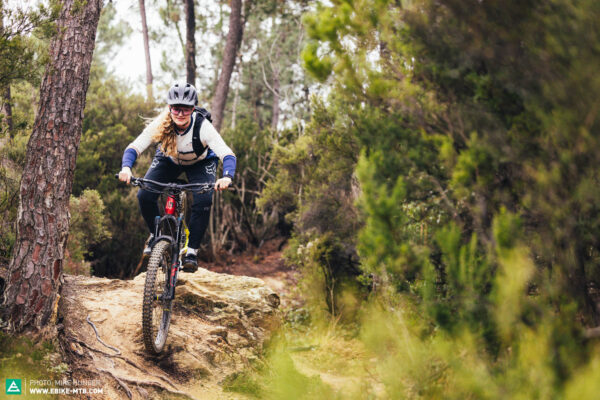
As far as forks are concerned, the FOX 38 Factory GRIP2 on the RADON DEFT 10.0 750 sets the bar in terms of performance and is rather surprising to see in a price-restricted group test. The GRIP2 damper offers plenty of adjustability, allowing performance-oriented riders to get the most out of their suspension. However, this also requires a certain amount of knowledge, skill, and patience when setting it up. All other forks in the test field provide significantly fewer adjustment options, but this isn’t necessarily a bad thing, depending on the intended use. The same applies to the shocks in the test field. Here, too, the FOX FLOAT X2 on the RADON is the class leader in terms of performance and adjustability, while the other bikes have to make do with less adjustability. The Moustache Samedi Trail 5 also has a shock that you’ll find on the brand’s flagship models: the Moustache Magic Grip Control. Developed in-house, this shock features on all of Moustache’s full-suspension bikes – whether entry level or top-end – and delivers a high level of comfort and easy adjustability.
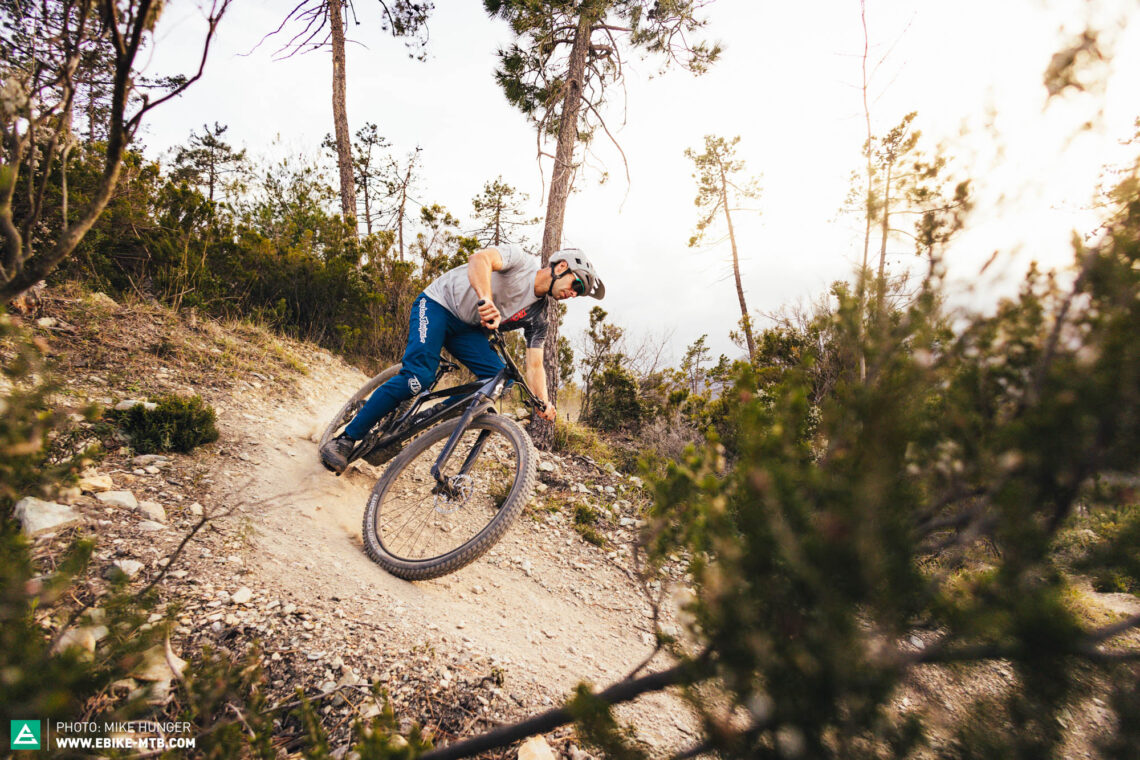
Black gold – Why tires are the most underrated component of eMTBs
Often underestimated, but much more important for trail performance than most think: the tires. This is because they play a decisive role in providing grip, dampening small impacts and vibrations, providing stability at speed, and offering puncture protection on the trail. Performance oriented riders who spend a lot of time on trails need tires with sturdy casings, and a soft rubber compound for maximum grip up front. It’s a pity that very few brands have taken to heart what we’ve been preaching for years in every group test. Once again, the tires on most of the bikes on test are insufficient for serious trail riding. At least the rear tires on the Haibike NDURO 7 and SIMPLON Steamer Pmax feature the very robust Schwalbe Super Gravity casing, which provides plenty of stability and puncture protection. SIMPLON even go so far as to spec a super wide 2.8″ tire on the rear. While it provides added comfort on the climbs and descents, it also results in vague handling on the trail and a lot of rolling resistance. The MAXXIS ASSEGAI tires with the flimsy EXO casing on the Moustache or the Schwalbe Wicked Will tires with the even thinner Super Race casing on the SCOTT Lumen eRide 910 just aren’t suitable for real trail riding. However, the thin-walled tires are good enough for touring and everyday use, and offer an advantage in terms of weight and rolling resistance compared to more robust models.
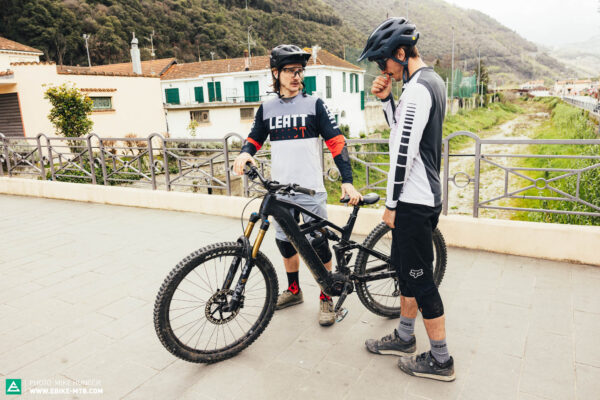

12, 11, 10 – The final drivetrain countdown
If you believe that 12 speed drivetrains have become the only standard, you’d be wrong. Even though 5 of the 7 bikes feature a 1×12 setup, 11 and even 10 speed drivetrains are sticking around quite stubbornly. The SIMPLON Steamer Pmax relies on the low-end Shimano DEORE 10-speed drivetrain with an 11–43 t LINKGLIDE cassette. It even has a gear indicator on the shifter – we haven’t seen that in ages. Compared to its higher-end 12-speed counterparts, the shifting of the 10-speed drivetrain is noticeably slower and less crisp, though it promises to be much more robust and durable.
The stand-out drivetrain on test is the Shimano XT Di2 on the BULLS SONIC EVO EN-SL1, offering electronic and automatic shifting. We wouldn’t have expected to come across an electronic drivetrain on a bike in this price range! However, the automatic mode is only aimed at touring as it wasn’t developed for trail use and it isn’t yet capable of predictive shifting, unfortunately. As such, you’ll still have to select your gears manually on the trail, whether you’re riding up- or downhill.
As in every group test, we encountered several derailleur dazzlers. For example, RADON combine the high-end Eagle X01 derailleur with the lower tier GX trigger, chain, and cassette on the DEFT 10.0 750. While the lower end shifter just offers less adjustability, the chain and cassette are significantly heavier. Moustache rely on a cheap third-party cassette from SunRace on the Samedi Trail 5. You won’t necessarily notice any of this at first glance, because buyers usually get distracted by the derailleur…
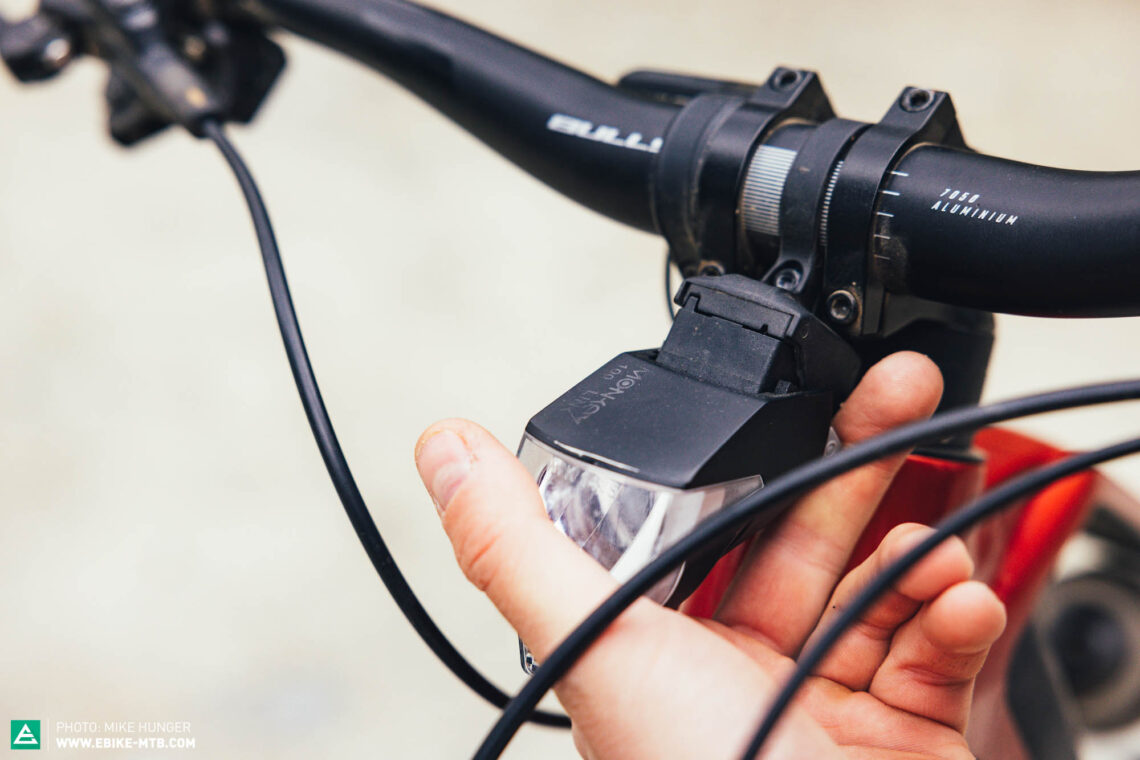
Anything goes, but nothing’s a must – Useful eMTB accessories
Some of the bikes on test come specced with useful accessories that also offer benefits off the trails and in day-to-day life. The BULLS SONIC EVO EN-SL1 is the only bike on test with a MonkeyLink bracket, which allows you to attach a headlight and power it via the inboard ebike battery. We would like to see more bikes in this price range come fitted with cleverly integrated lights, as they don’t detract from the bike’s trail performance and are super convenient on your ride home from work or a post-ride beer. Commuters will also appreciate the mudguard mounts on the Moustache, as well as the fact that the batteries are removable on all bikes, except the SCOTT Lumen eRide 910. This allows you to charge the battery inside your apartment if you don’t have access to a power outlet in the garage or basement. You could even charge at your workplace, so you can blast to work and back in Turbo mode with added peace of mind. The easier it is to access, the better! The BULLS gets top marks in this case, as it makes quick and simple work of removing the battery. To prevent your expensive eMTB from growing legs, the Bosch motors come with a built-in Bike Lock feature. With this feature, you can lock the motor via the Bosch app, making life a lot more difficult for would-be thieves. We would love to see more smart anti-theft solutions like this, so that we don’t always have to keep an eye on our bikes as we enjoy our well-deserved post-ride refreshments.
Tops and flops
Tops
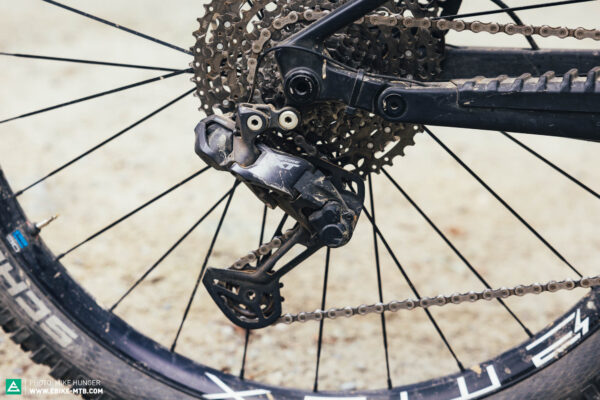
You don’t have to skimp on the latest eMTB tech, even if you’re on a budget. Who would have thought that you could find an electronic and automatic drivetrain on an e-mountainbike for under € 7,000?
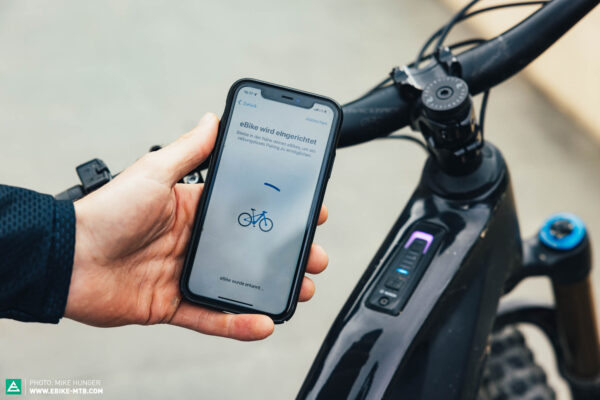
Despite the significantly lower price, you get the same level of connectivity as on the respective brands’ flagship models – at no extra charge.
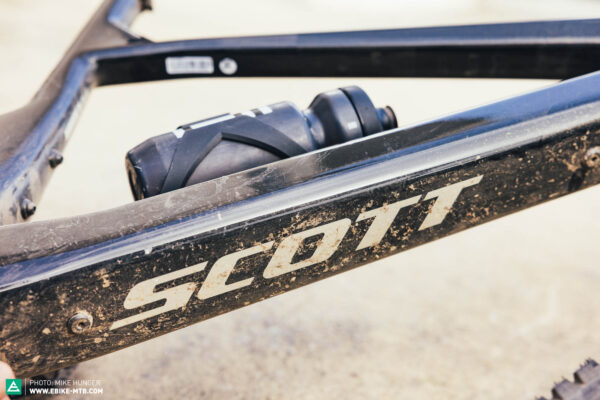
If you expect to see a flock of ugly ducklings at this price range, you’re in for a surprise when you see our test field. The slender carbon frames of the BULLS and SCOTT are particularly good looking.

Convenient accessories like cleverly integrated lights don’t interfere with performance out on the trail, while providing real added value on your way home in the dark.
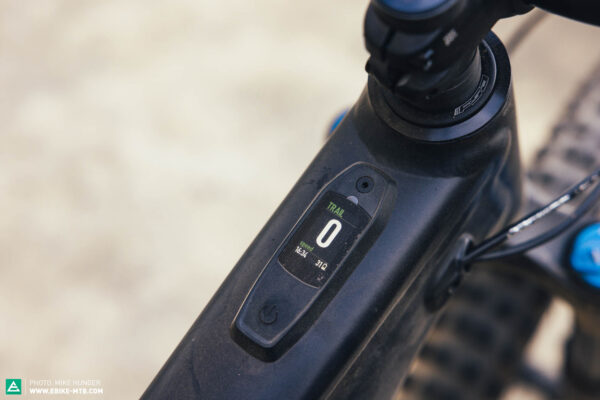
With the Specialized and SCOTT, the test field includes two bikes that have the display integrated into the top tube. This doesn’t just look good, but also protects the display from damage in the event of a crash.
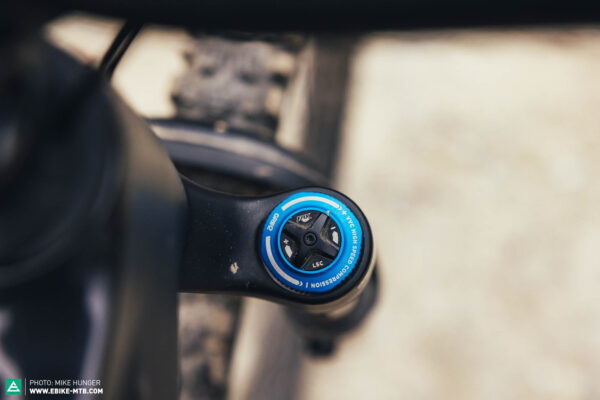
Despite the € 7,000 price cap, the test field includes top of the range FOX Factory suspension. Performance oriented riders will be happy to see the wide range of adjustment options on the suspension of the RADON DEFT 10.0 750.
Flops

Small 180 rotors limit a bike’s braking performance enormously. Upgrading to 200 mm doesn’t add a significant amount of weight, and it doesn’t weigh heavily on your wallet either.
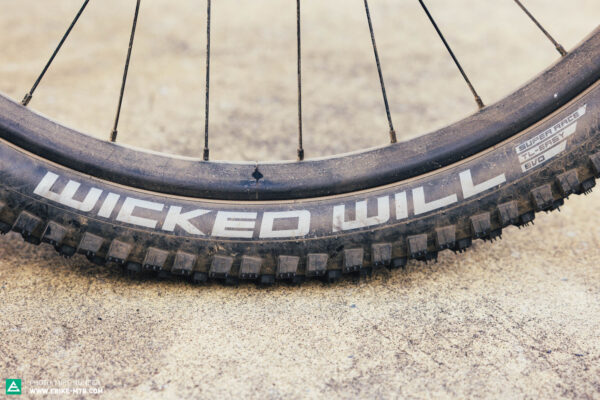
Even though we’ve long been advocating for more robust tires, many bikes in this group test still come specced with inappropriately thin-walled tires. They don’t just limit the bike’s performance, but also puncture easily, leading to frustration and disappointment.
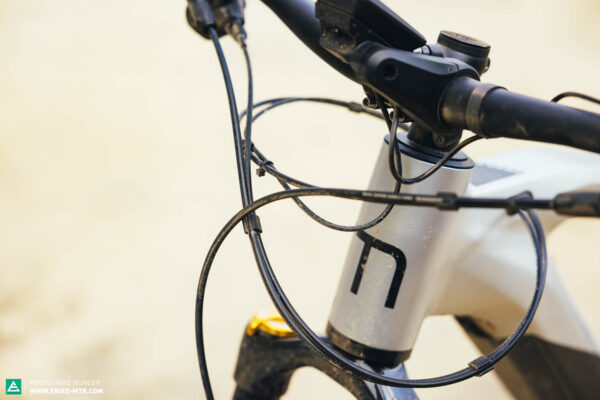
Once again, unwieldy remotes and clunky displays offering limited information are a part of the inventory in this year’s sub € 7,000 group test. However, the test field also includes good examples of how things should be done, such as the TQ system or the integration of the Bosch system on the RADON DEFT 10.0 750.
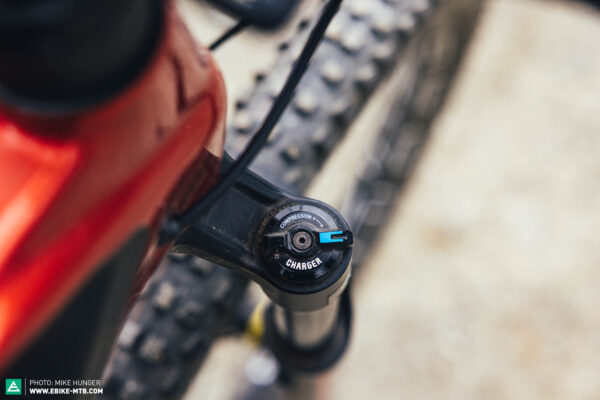
Unfortunately, if the suspension is overwhelmed, the entire bike will quickly also feel overwhelmed on the trail. Case in point: the RockShox Lyrik Select on the BULLS SONIC EVO EN-SL1 doesn’t do the bike justice at all, making the front end feel nervous when things get technical.
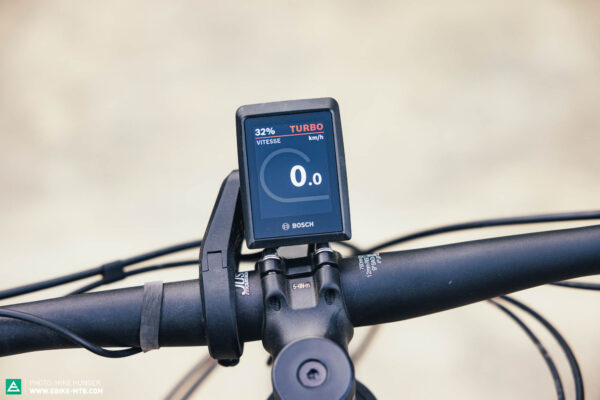
An exposed display on the handlebar is bound to get damaged in the event of a crash. Not to mention the look…
The best eMTB for under € 7,000 – The 2023 RADON DEFT 10.0 750

24.7 kg in size L | € 6,799 | Click for review
The RADON DEFT 10.0 750 combines a discreet look with the wow factor of FOX Factory suspension. It delivers on the trail with its big-hitting capabilities, the suspension offering an excellent combination of sensitivity and support. The bike comes to life on rough trails, but it can also play to its strengths on flowing terrain thanks to the supportive suspension. The RADON DEFT’s all-round capabilities can’t be beat in this group test either and, thanks to its balanced, upright riding position, it remains comfortable to ride even after a long day in the saddle. On steep climbs, only the Moustache does better. This is all topped off with high-quality components that will even allow advanced riders to progress, making the RADON DEFT 10.0 750 the deserved Best in Test!
Hit the link for the full review
Our Best Buy – The 2023 Specialized Levo Comp Alloy

23.7 kg in size S4 | € 6,000 | Click for review
No other bike in this group test has handling as balanced as the Specialized Levo Comp Alloy. Both beginners and advanced riders will immediately feel comfortable riding it, which makes it a safe bet for anyone. That said, it can’t quite keep up with the support offered by the RADON DEFT 10.0 750, making it fall behind. However, the Specialized Levo Comp Alloy can deliver with its integrated display, wealth of cool connectivity features, and well-rounded ecosystem. Our well-deserved Best Buy!
Hit the link for the full review
An overview of the eMTBs on test for under € 7,000
BULLS SONIC EVO EN-SL1
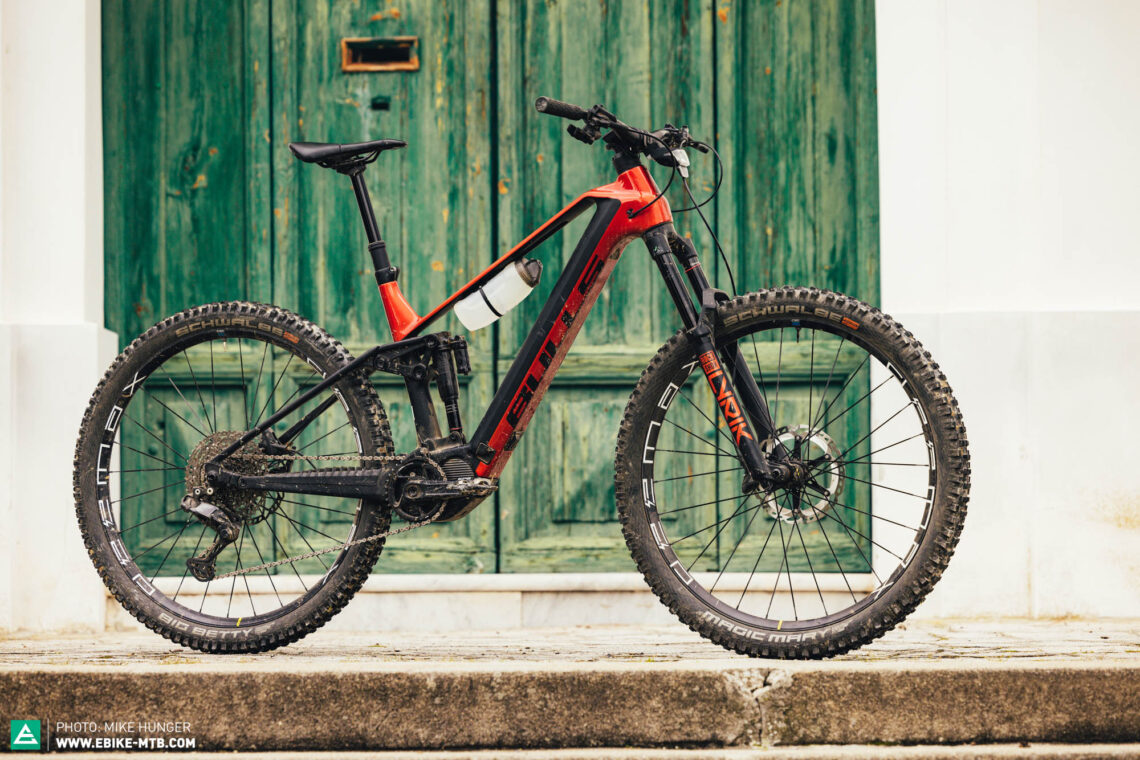
22.1 kg in size L | € 6,699 | Click for review
The BULLS SONIC EVO EN-SL1 boasts some of the latest tech, such as the electronic and automatic Shimano XT Di2 drivetrain, as well as a slender carbon frame. It also cuts an excellent figure in everyday life thanks to mounts for a headlight and a side stand, approval to pull a trailer, and an easily removable battery. Considering its low weight and agile handling, it feels most comfortable on flowing trails. When things get more technical, however, you’ll quickly have to step it down a notch.
Hit the link for the full review
Haibike NDURO 7
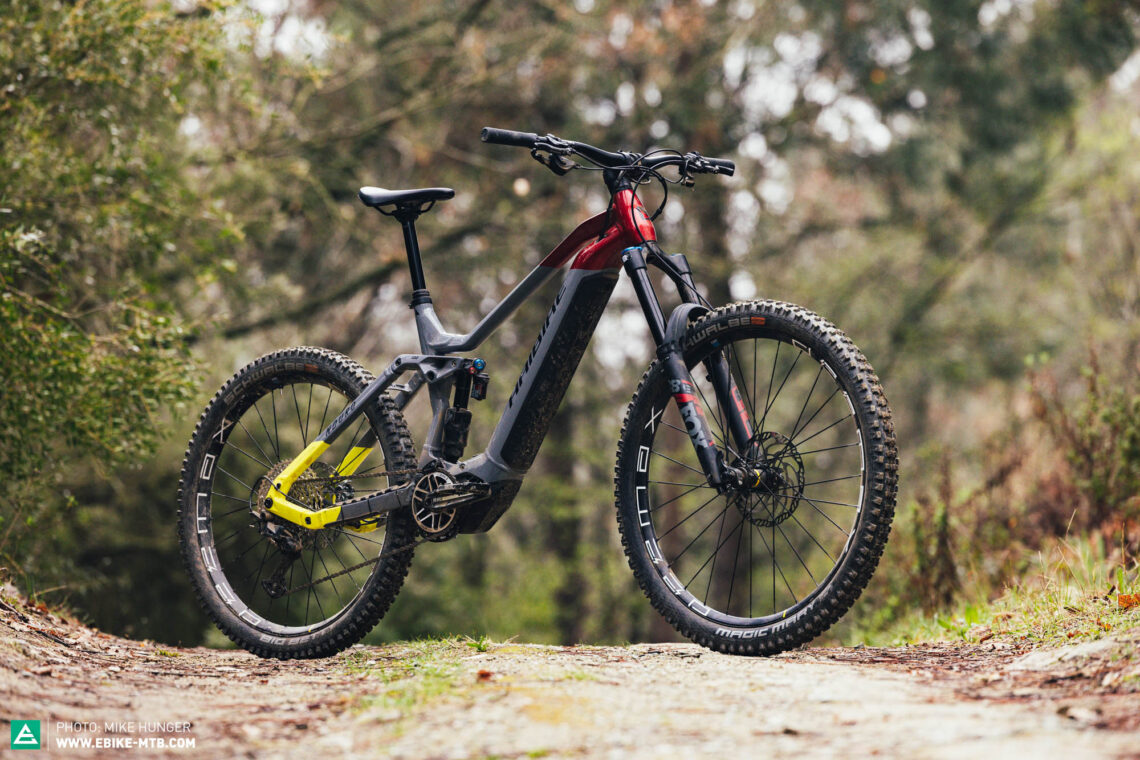
26.5 kg in size L | € 6,499 | Click for review
The Haibike NDURO 7 rides the way it looks: like a monster truck. With its long travel suspension and tall front end, it instils you with confidence, though it feels somewhat undefined and vague. While beginners benefit from the confidence inspiring handling, advanced riders will want significantly more support. Thanks to the powerful motor and comfortable suspension, the Haibike also cuts a fine figure on tours and technical climbs.
Hit the link for the full review
Moustache Samedi 29 Trail 5
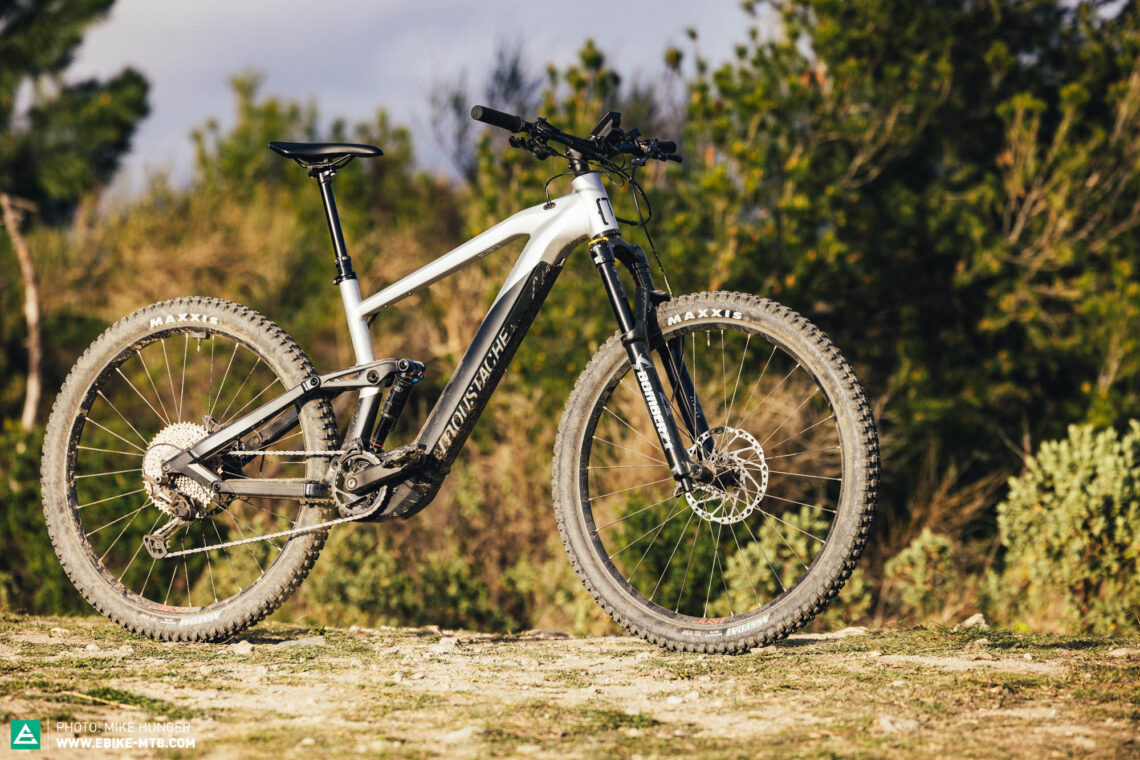
25.1 kg in size L | € 6,299 | Click for review
The Moustache Samedi 29 Trail 5 is the mountain goat amongst the bikes on test. The combination of ultra-sensitive rear suspension, a very powerful motor, and long chainstays, lets it make easy work of even the nastiest climbs. It also performs well on tours and trails with its plush rear suspension, which does a great job of absorbing impacts. However, advanced riders will want a bit more support from the suspension, along with more agile handling.
Hit the link for the full review
SCOTT Lumen eRide 910
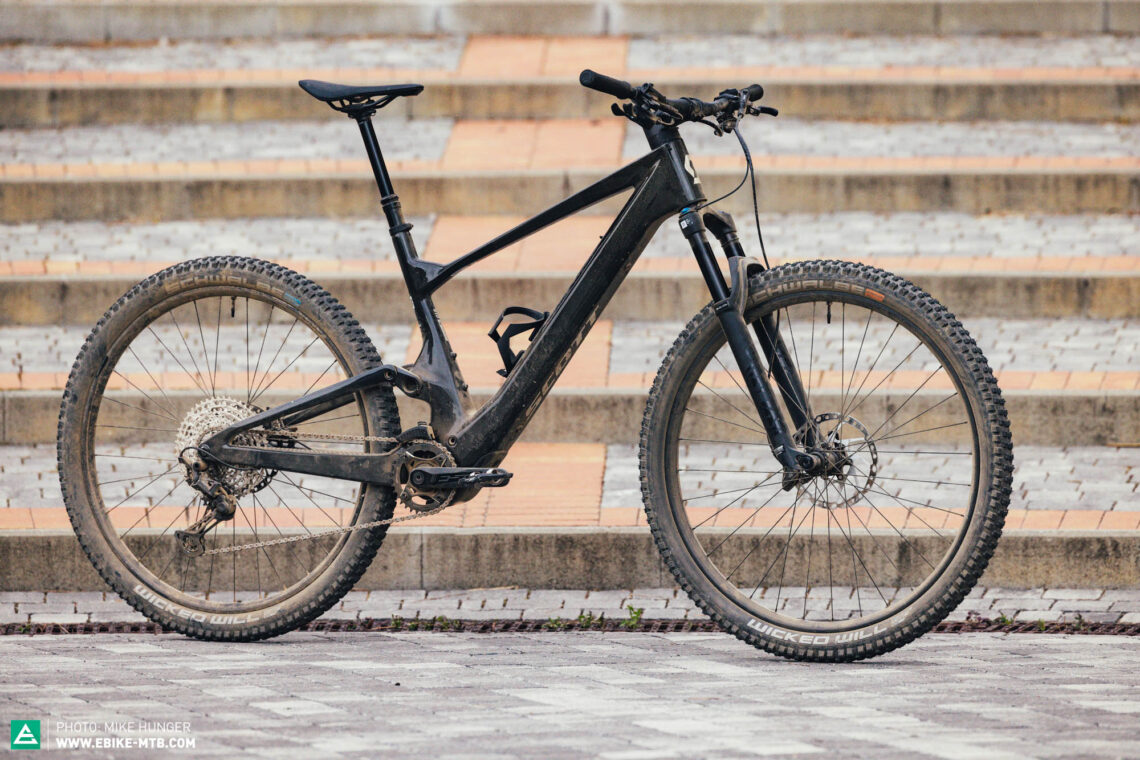
17.8 kg in size L | € 6,999 | Click for review
Without a doubt, the SCOTT Lumen eRide 910 is the best-looking bike on test with its beautiful carbon frame and high level of integration. Due to the aggressive riding position and very natural feeling support of the TQ HPR50 motor, you won’t reach the summit without breaking a sweat, though this isn’t the bike’s intention anyway. It’s a ton of fun on flowing descents, where it feels like an analogue bike. However, when things get more technical, you’ll reach the limits of the 130 mm travel suspension rather quickly. In this case, it takes a skilled rider to keep the bike on the desired line.
Hit the link for the full review
SIMPLON Steamer Pmax
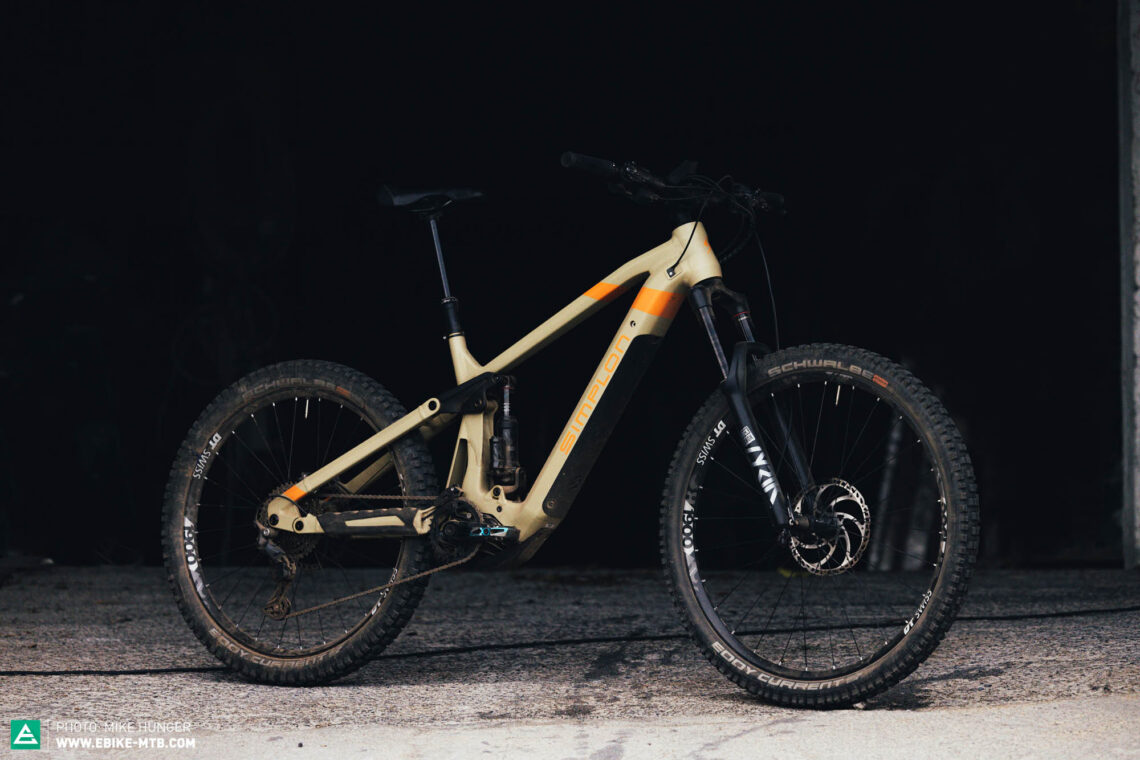
27 kg in size L | € 6,929 | Click for review
The word elegance isn’t one we’d use to describe the SIMPLON Steamer Pmax. Instead, it catches your eye with its burly aluminium frame, thick weld seams, and fat 2.8″ tire on the rear, reminiscent of a steamroller, which fits the name. The steamroller theme continues on the trail where it simply ploughs through rock gardens, though this comes at the cost of agility. It offers a relaxed riding position on the climbs and provides plenty of grip in technical terrain. All in all, the SIMPLON Steamer Pmax is a good all-rounder, but there are even better bikes on test.
Hit the link for the full review

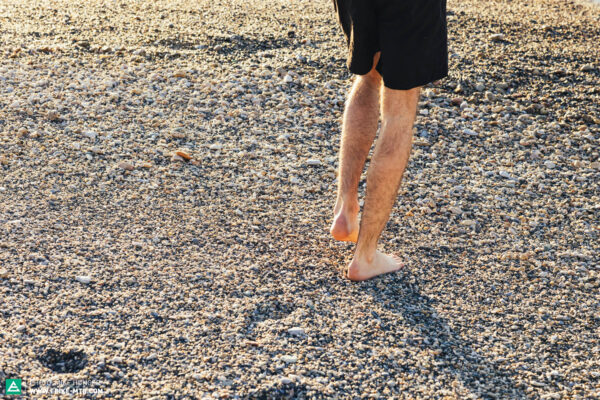

Did you enjoy this article? If so, we would be stoked if you decide to support us with a monthly contribution. By becoming a supporter of E-MOUNTAINBIKE, you will help secure a sustainable future for high-quality cycling journalism. Click here to learn more.
Words: Felix Rauch Photos: Mike Hunger









